These photos are from the Boon Samha (บุญซำฮะ) ceremony in Ban Thung Mon, Amphoe Ban Phai, Khon Kaen province on June 5, 2019. Here, as in many places in Isan, locals use the name Boon Berk Bahn (บุญเบิกบ้าน – “Opening the Home”) instead of Boon Samha. Thanks to Catherine Stebeleski for the invitation and Lung Sura Laebong for answering all my questions. For more information, there’s an explanation of Boon Samha and an overview of heet sip-song, the twelve Isan merit-making traditions.
We came to the village early on the morning of Boon Samha, so I didn’t see people building the small sand stupa or the ceremony with the monks that took place the night before. Some day I’ll try to go back and photograph these.
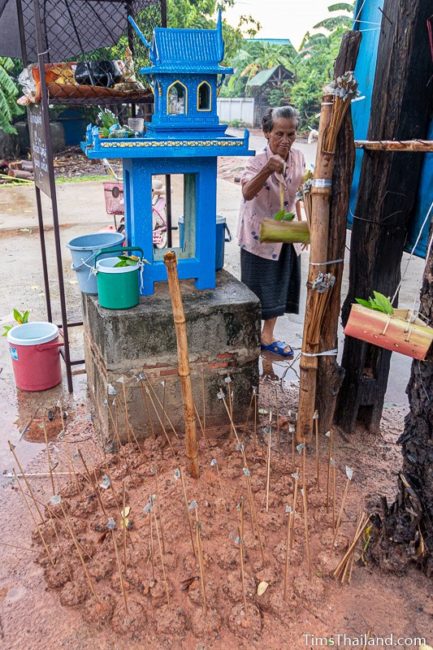
Boon Samha
At Ban Thung Mon, the Boon Samha service is held at the sala glang bahn village meeting hall, not the temple. People began arriving at 6am with buckets of water; triangular kratong made from the bark of banana plants (called kratong na wua, “cow face kratong,” by many people because cow’s heads are sort of triangular), and baskets of food for the monks.
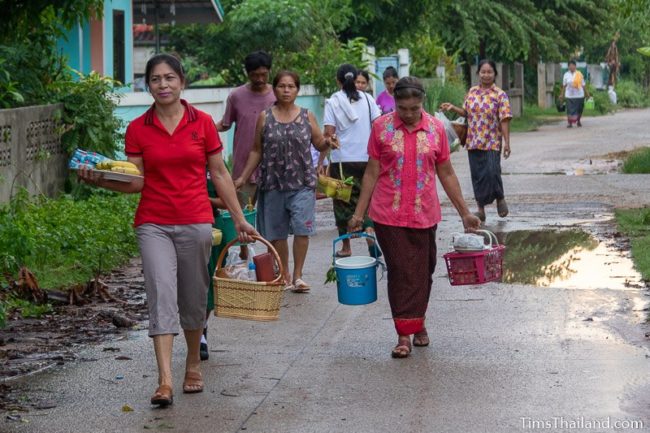
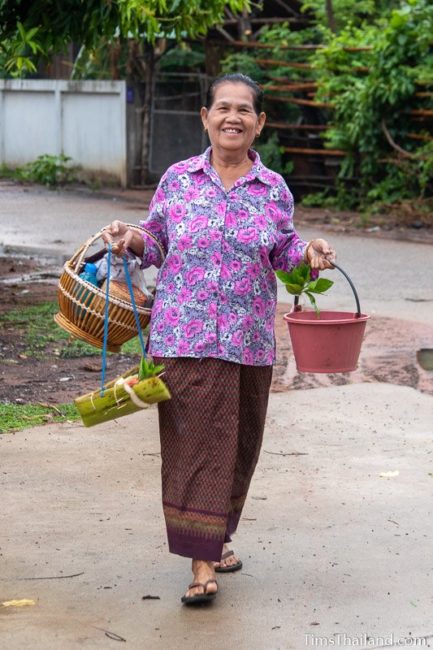
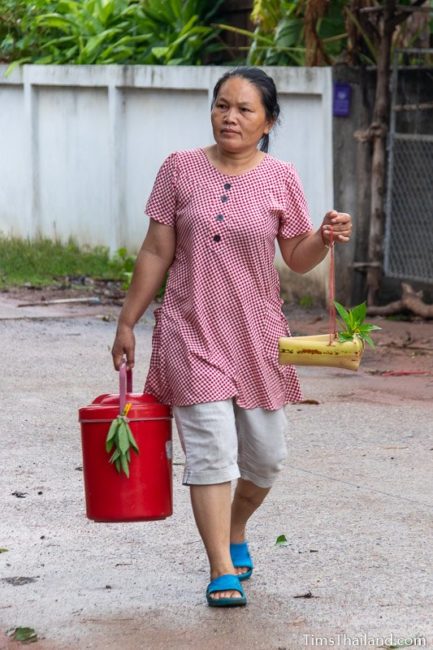
The buckets and kratong were respectively placed on the ground and hung (mostly on a bamboo pole specifically placed for this purpose) around a small Buddha shrine. They were going to be blessed later that morning.
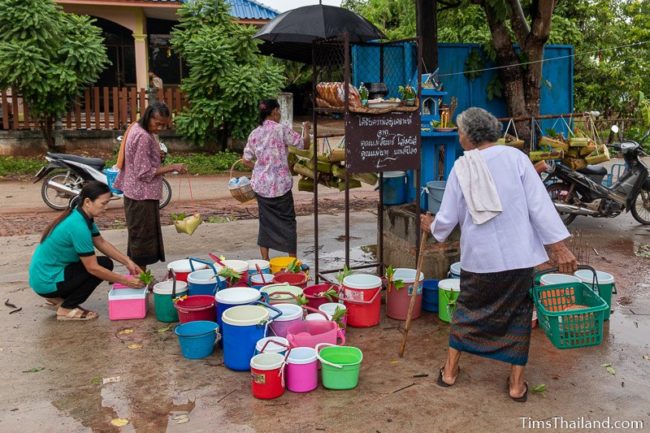
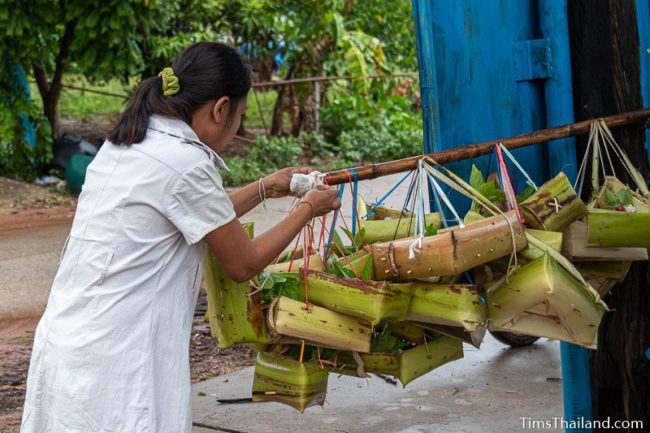
Just about every kratong had sticky rice, fish, dried chili, and a variety of sweets, but people put in whatever they wanted, including fruit, cucumbers, bla-tawng-go (a doughnut-like fried bread), salt, betel nut sets, and cigarettes. Besides food, the kratong contained snake jasmine leaves (chosen because the Thai name, bai thong pan chang, is auspicious – it means 600 kilograms of gold) and candles. The leaves and candles were also tied to the water buckets with white cotton string.
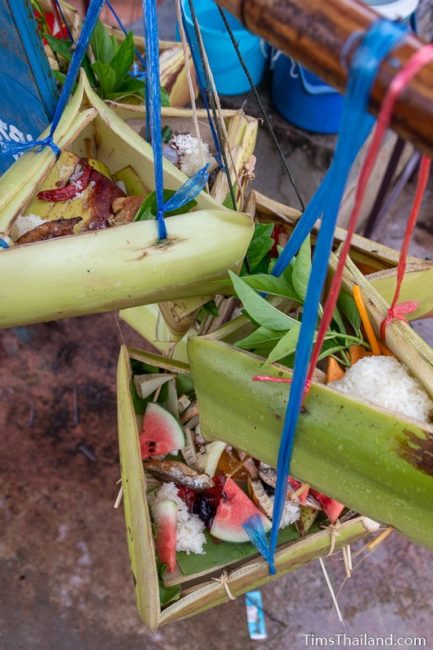
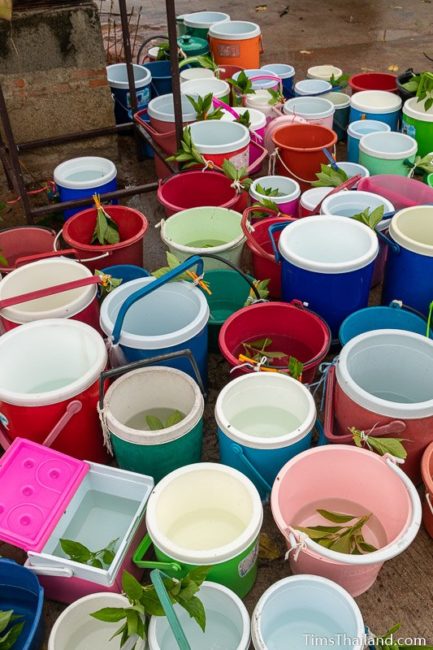
As people arrived, the man organizing the day’s ceremony, a village elder, offered food, candles, snake jasmine leaves, bai sii, a small Buddha statue, and a set of monk robes to invite Phra Upakut (a legendary monk with strong supernatural powers) to come provide protection for the morning’s activities.
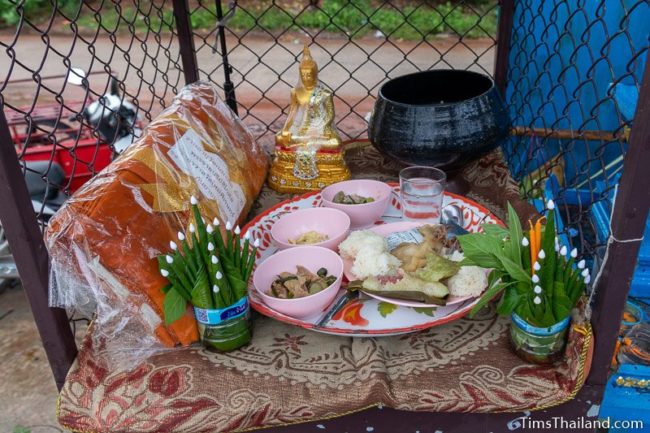
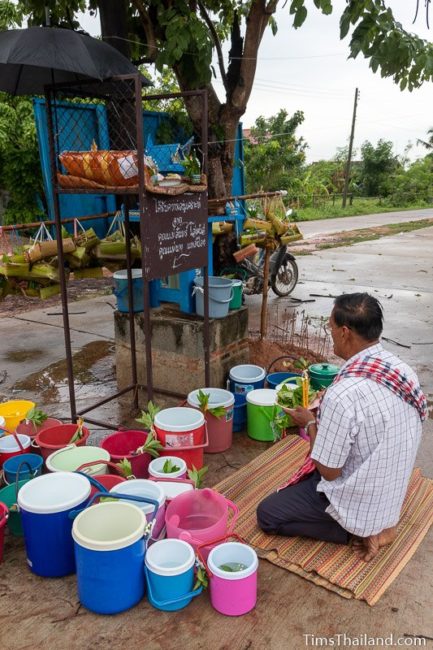
Many of the early arrivals were there to help prepare food for the monks. These included goy (raw beef mixed with herbs, lime, roasted rice powder, bile, and fresh blood), grilled catfish, gaeng naw mai som (fermented bamboo soup), gaeng om wun sen (herbal curry with glass noodles), and fruit.
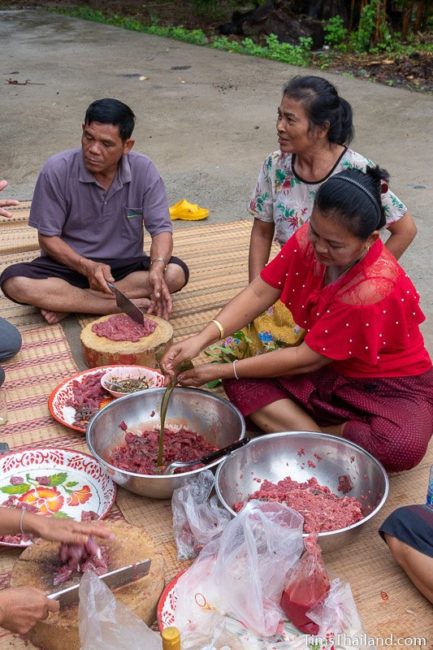
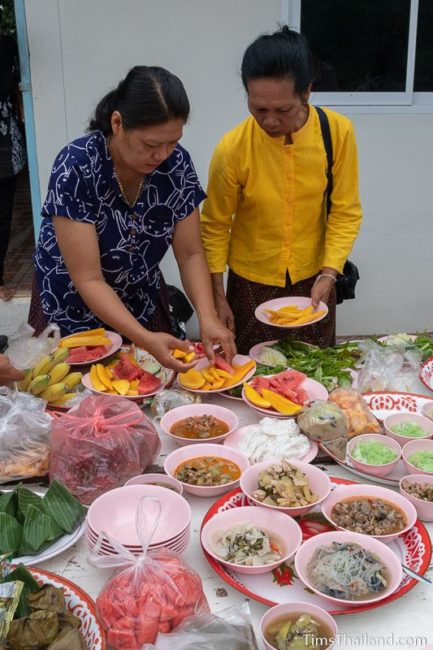
After Phra Upakut had been invited, people went into the woods behind the sala glang bahn to show their respect to the village’s guardian spirit by cleaning and decorating the shrine, lighting candles and incense, and offering food and snake jasmine leaves. In particular people gave sticky rice, khao tom mat (a steamed banana-leaf-wrapped snack made of sticky rice and banana), and kanom mok (sticky rice powder, coconut, sesame, sugar, and either peanut or yam also steamed inside a banana leaf). Some small homemade bang fai rockets were also launched in the spirit’s honor.
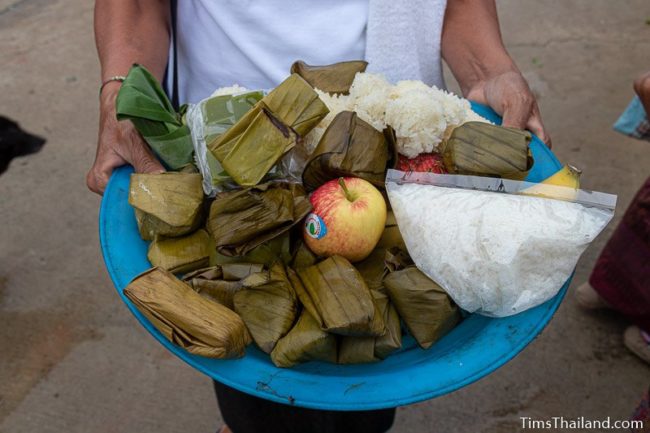
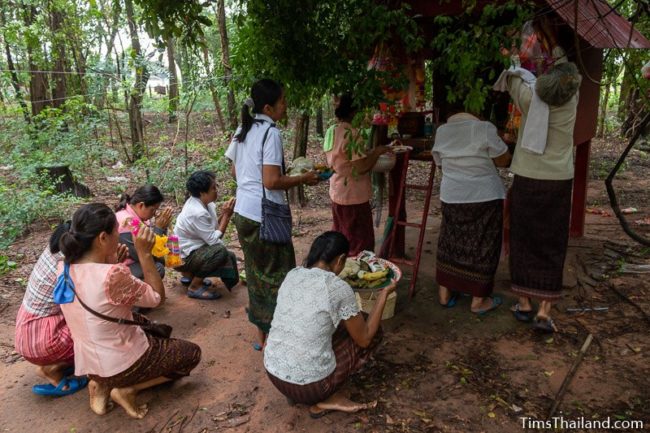
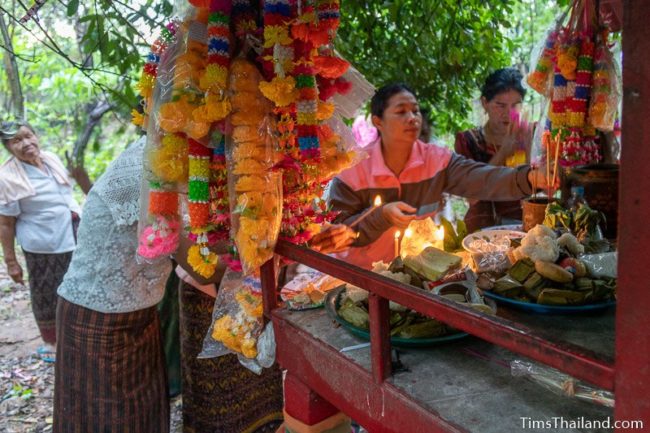
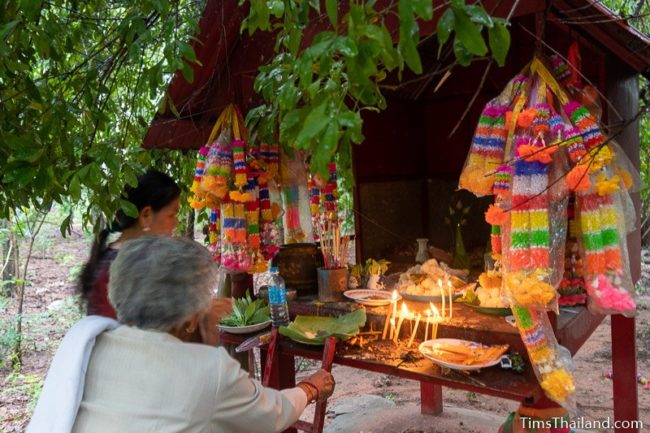
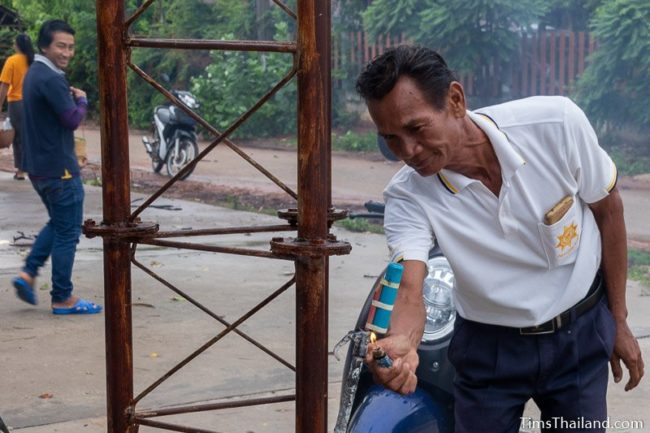
And in order that the blessings (both sending good luck in and pulling bad luck out) from all the morning’s activities was fully shared with everyone, both of the shrines were connected to all the houses in the village by a white cotton string.
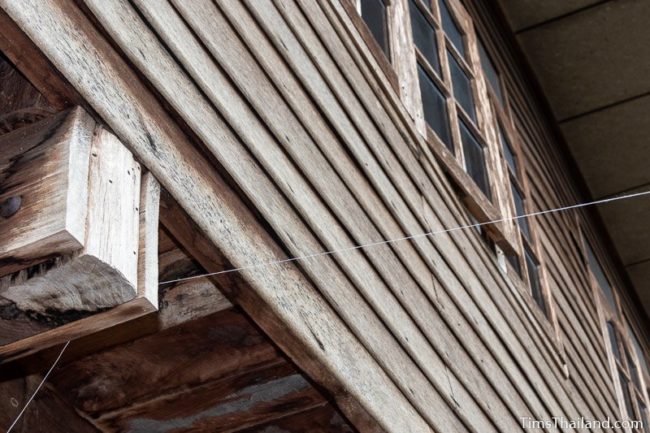
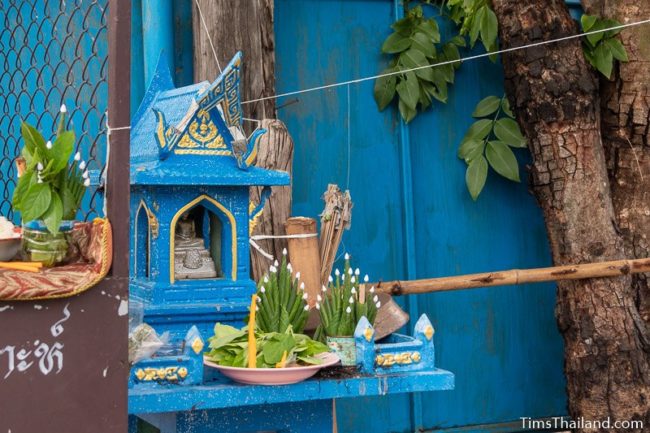
This string was also held by the monks during their suat mon chanting and prayers.
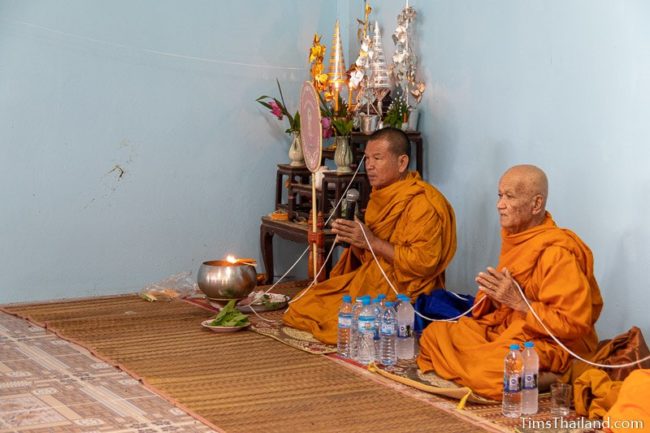
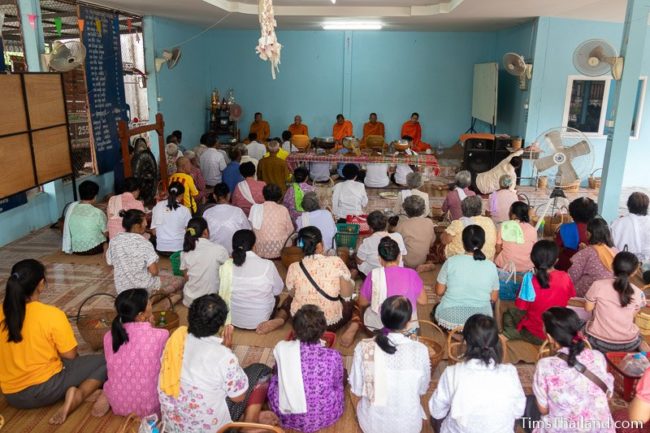
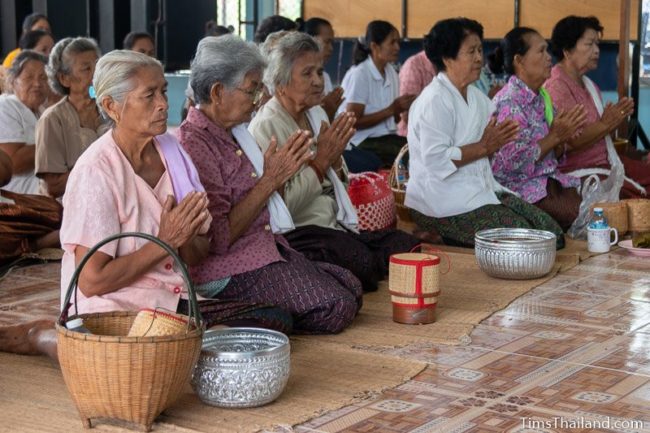
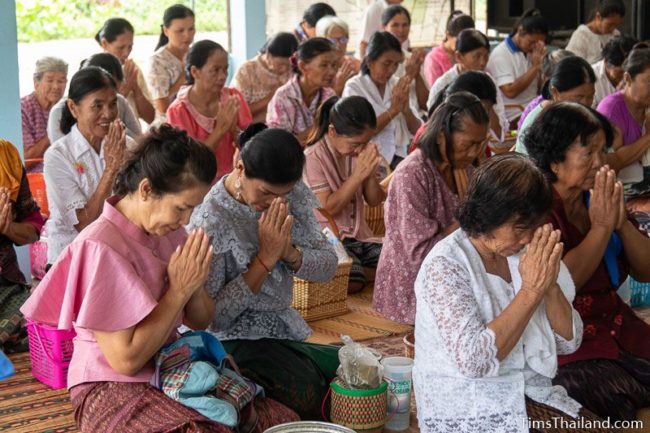
On this day, giving alms to the monks was done at the sala glang bahn instead of the usual house to house. Their alms bowls were set on a table and people put in sticky rice, khao tom mat, kanom mok, and a few other snacks. All the other food was delivered to the monks on trays.
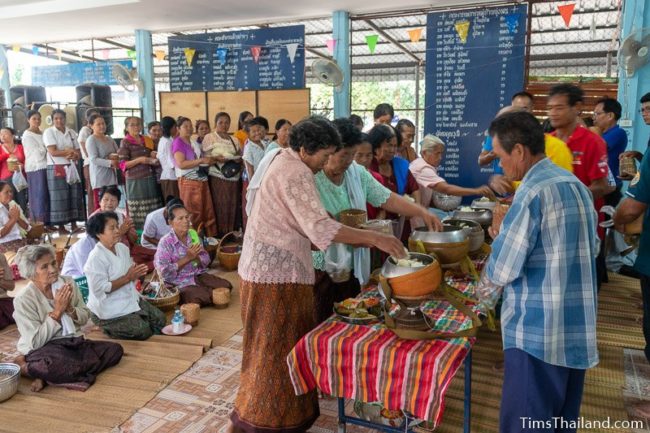

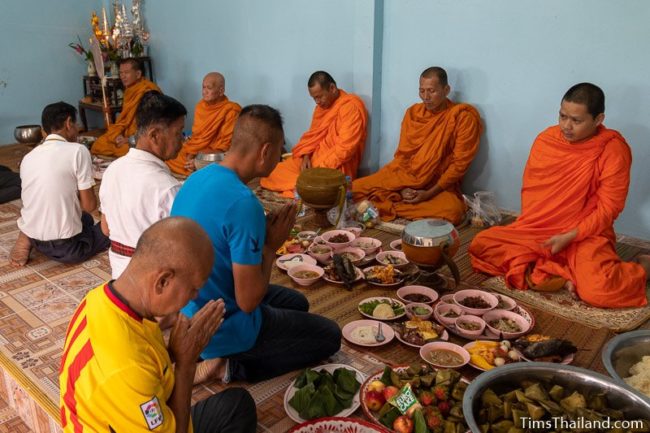
After the monks’ food was served (but not yet eaten) they chanted to make gruat nam holy water, which is used to pass merit on to people’s ancestors. Then one monk splashed water on the people in the sala glang bahn and on the kratong and water buckets that had been placed around the Buddha shrine earlier in the morning.
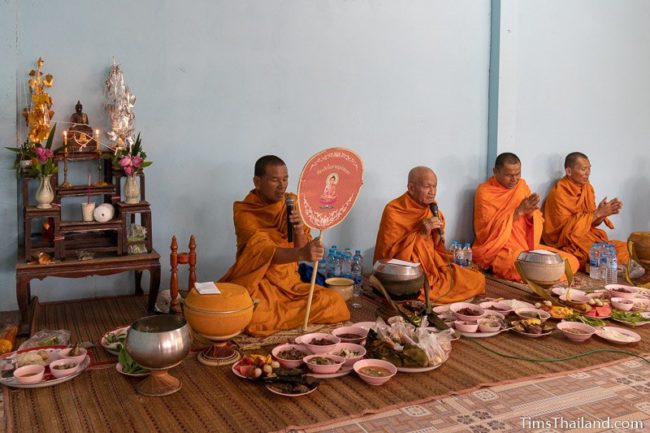
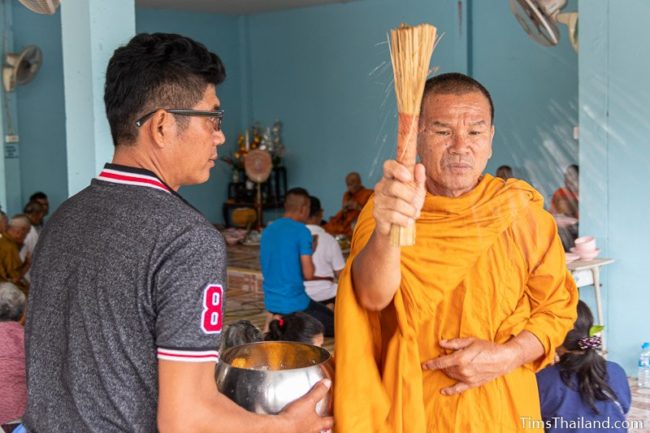
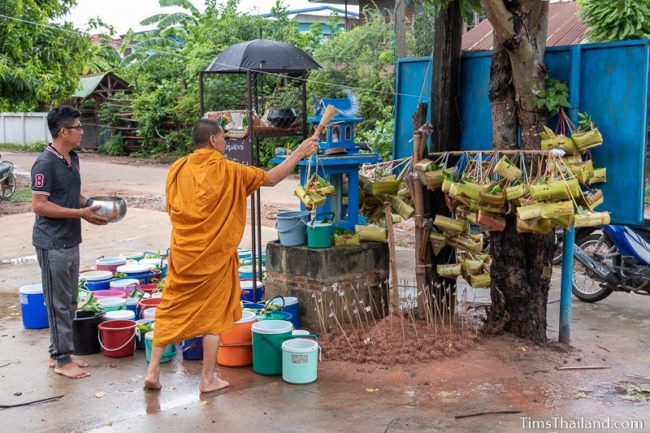
With water splashing finished, the monks began to eat and the people went outside to pour their gruat nam water on the ground next to a plant.
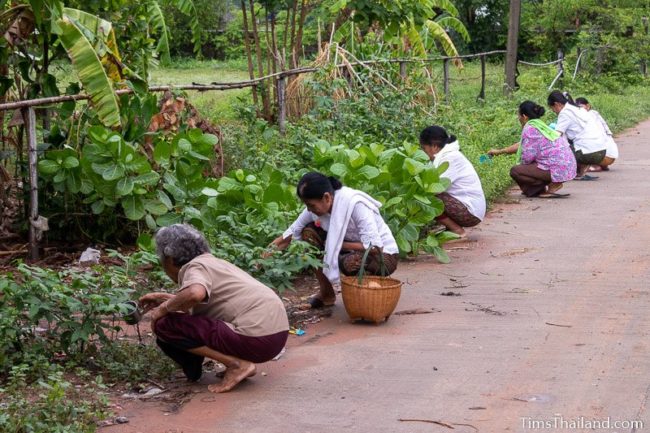
They then took their buckets of what was now holy water back home where it would be used to wash bad luck out of their houses – this being one of the core parts of samha, which means “washing” – by splashing it on anything and anyone they felt needed it.
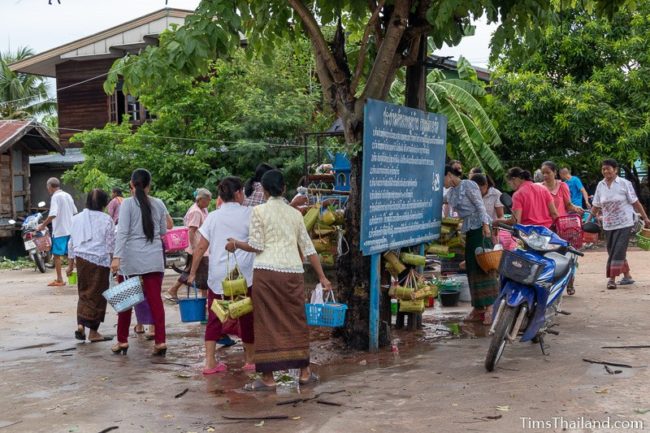
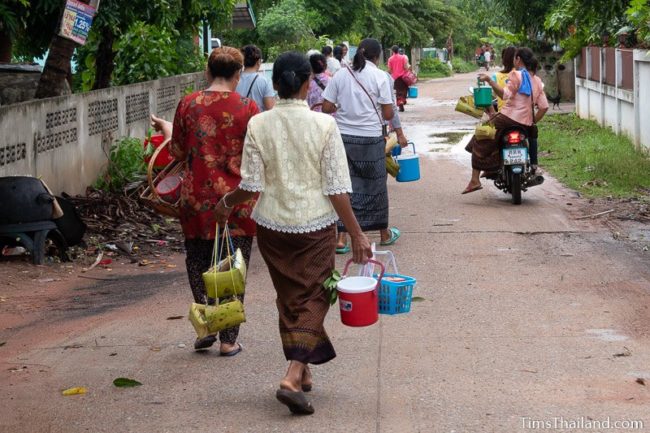
The kratong were hung at various intersections around the village to feed the spirits living there.
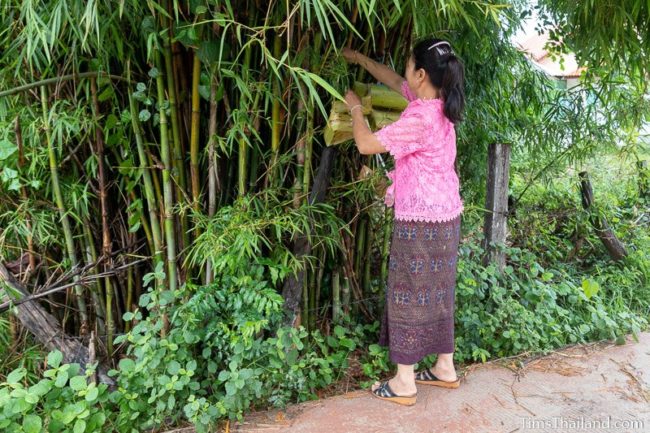
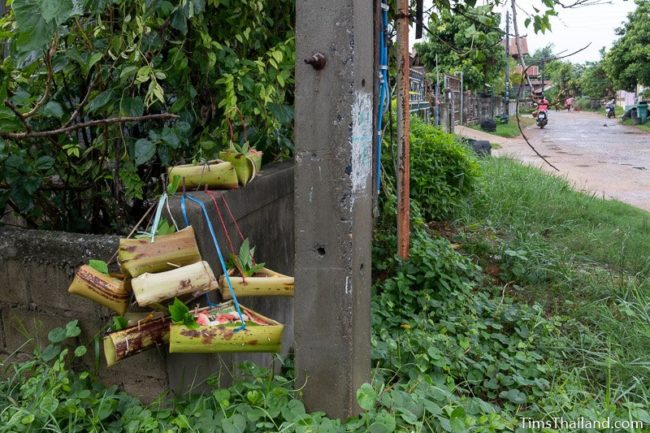
While this ended the classic Boon Samha celebrations for the village’s shrine and citizens, Ban Thung Mon always adds another activity to their version of the festival. This is rarely (or perhaps, never) done elsewhere, but it’s a practical choice.
Boon Haw Bu Jao Fa
For the second half of the village’s Boon Samha celebration, people go out to clean and pay respect to another important shrine, this one for a more powerful spirit – Bu Jao Fa (also called Bu Sok Jao Fa; sok signifying the land) – who not only looks after the village, but the land (including farm fields) around it, and also people’s transportation.
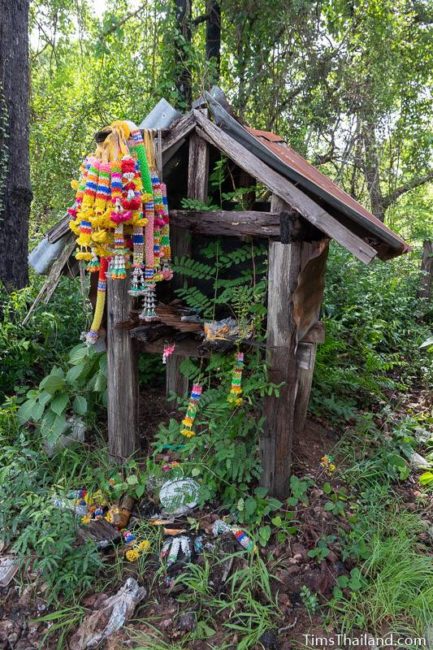
The Bu Jao Fa shrine is out among cassava fields 2.5km southeast of the village. This event is done together with a second village (Ban Nong Phak Waen) that is also under the spirit’s protection. People began arriving at 10am, about two hours after everything had finished up in the village.
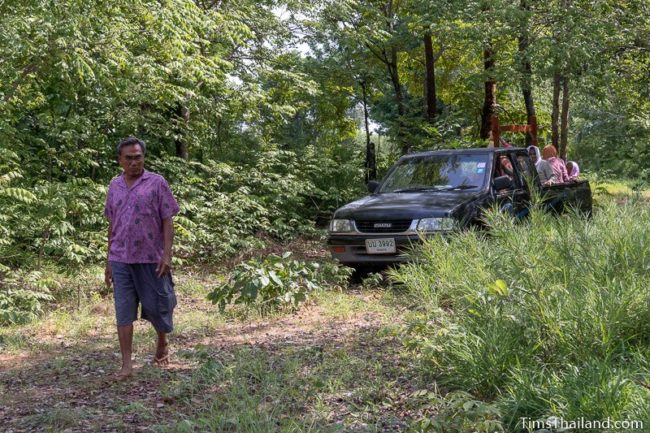
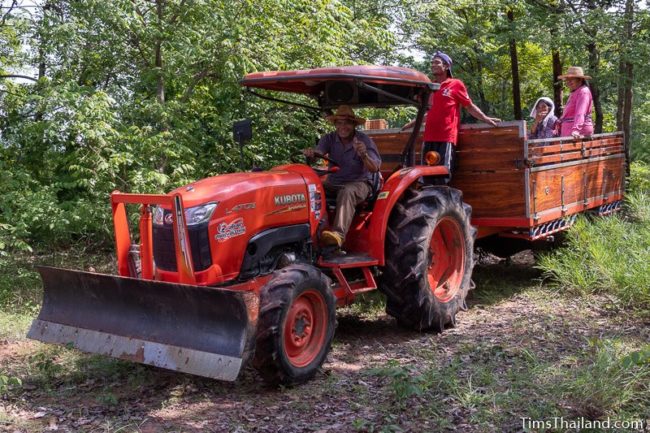
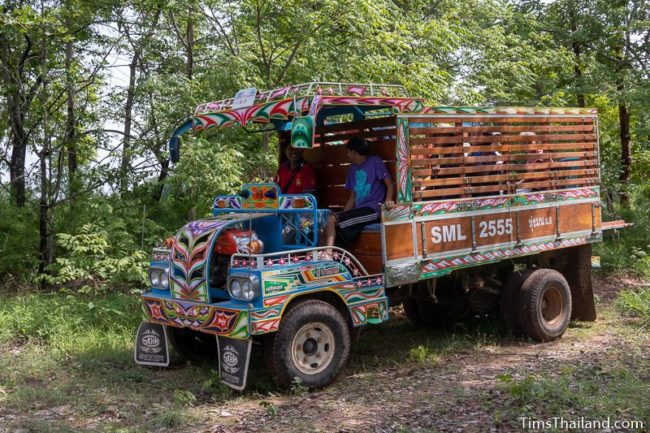
People started cleaning the shrine; or rather shrines since a new metal structure sits alongside the old wooden one.
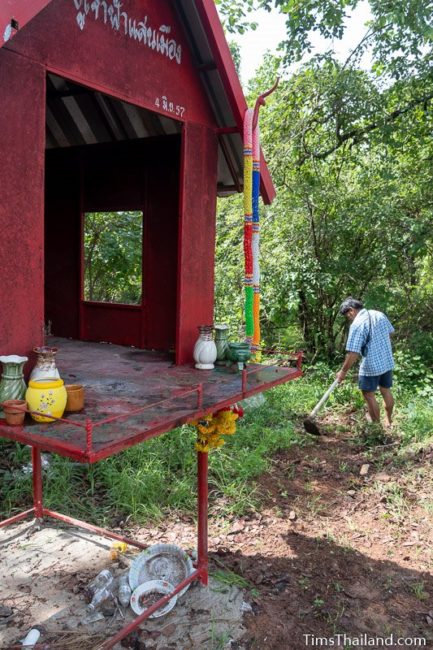
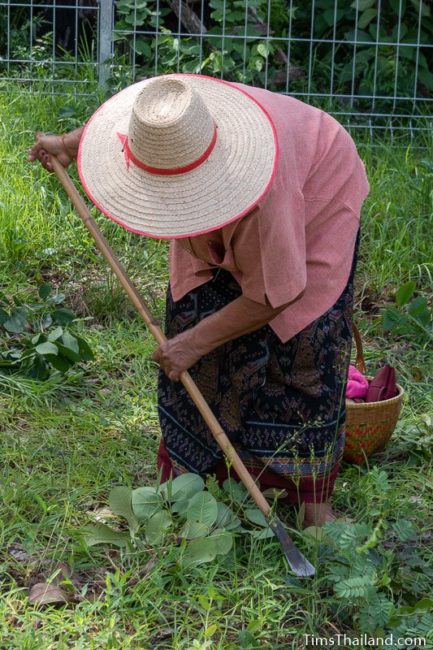
Next to the shrine, people built a small stupa, crocodile, and turtle out of dirt.
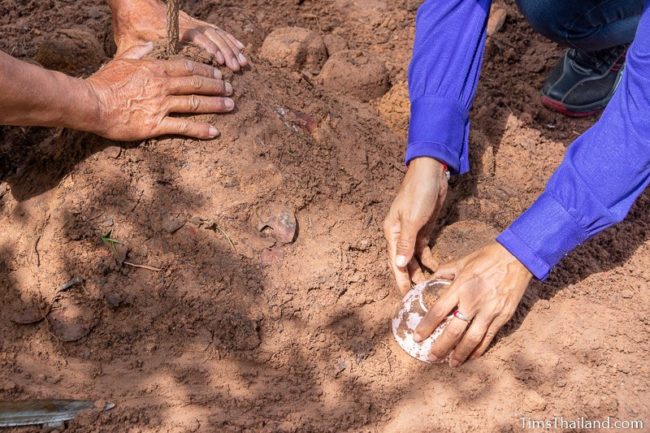
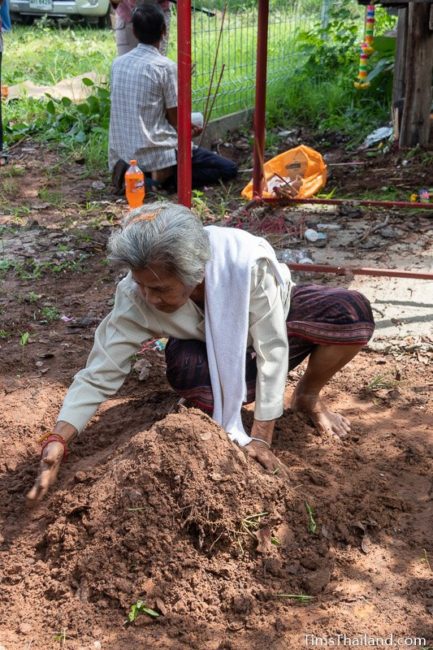
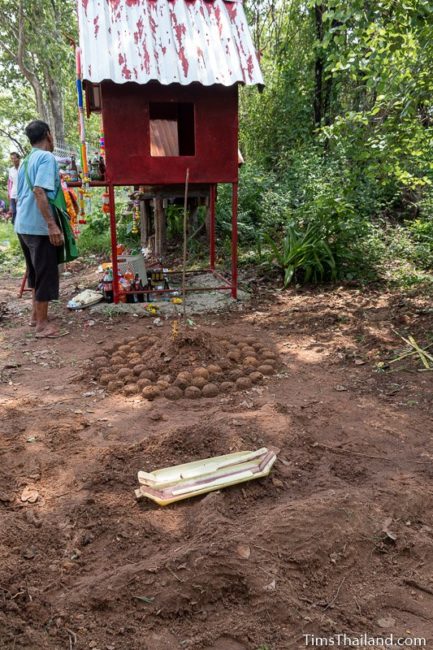
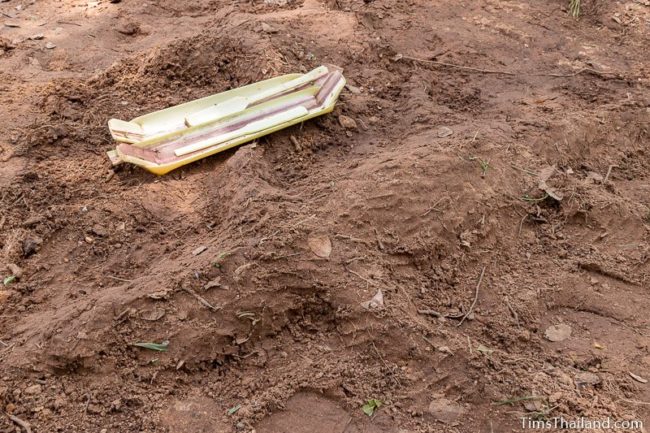
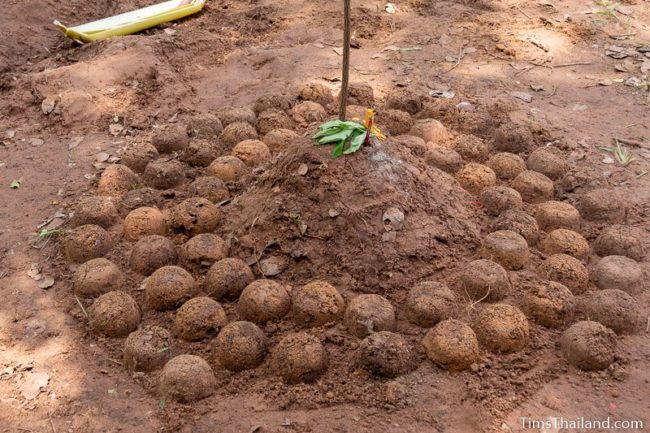
Offerings for the Bu Jao Fa ceremony, led by village elders, not the monks, were set on and below the shrine: these included lao kao Thai “whiskey,” Fanta, M-150 energy drink, sticky rice, chickens, bai sii, candles, incense, snake jasmine leaves, and bang fai rockets. People also wrote their vehicle license plate numbers and the names of the family members who drive and ride in them on paper. While most of these offerings would be taken back by people after the ceremony, some whiskey and red Fanta were poured on the ground for the spirit.
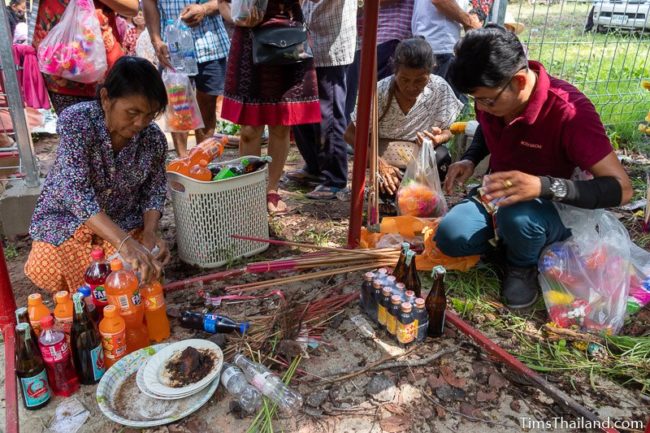
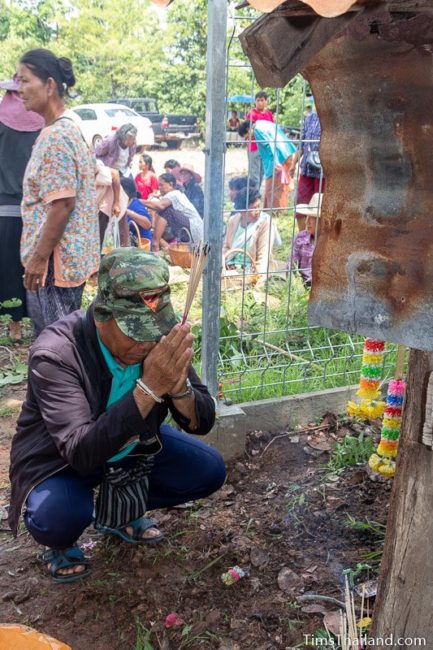
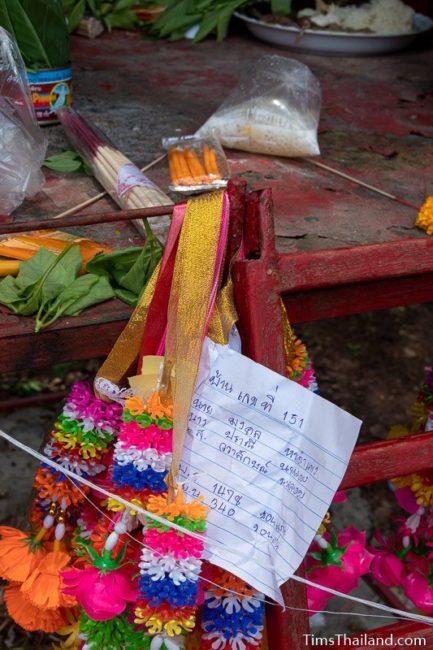
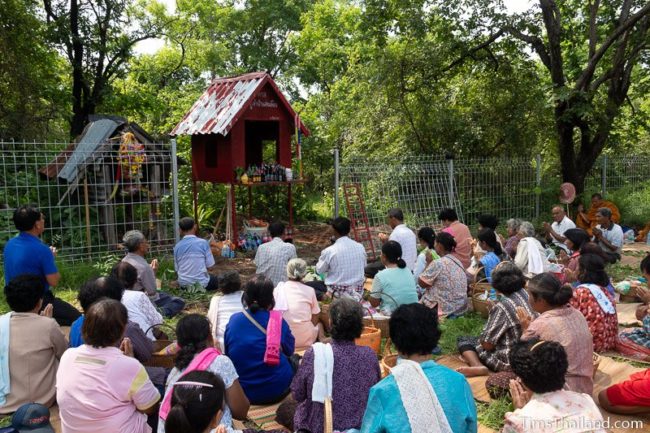
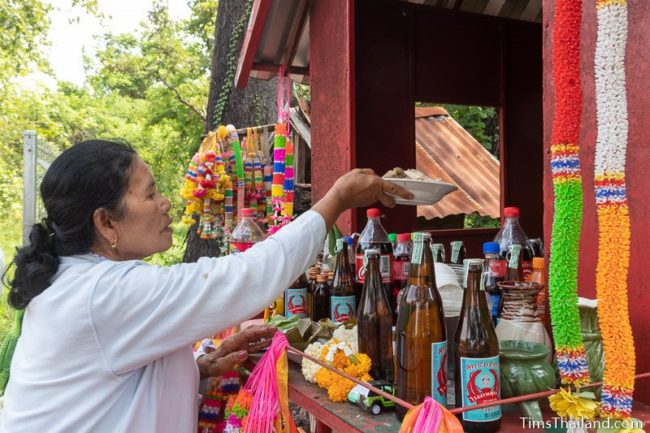
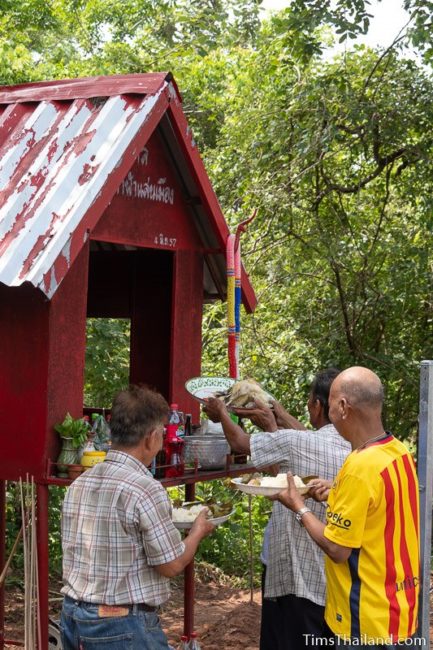
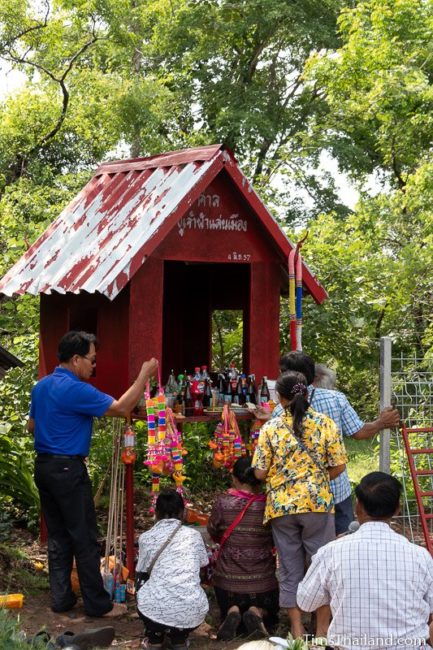
The two chickens (one for the village and one for the farm fields) that were given to the spirit were used for siang tai kang gai (“chicken chin fortune-telling”). A small bone from the skull was pulled out and examined. It is shaped much like a wishbone, and if the two sides are similarly shaped and sized then it will be a good year. And, according to these two chickens, there is good fortune ahead for Ban Thung Mon and Ban Nong Phak Waen.
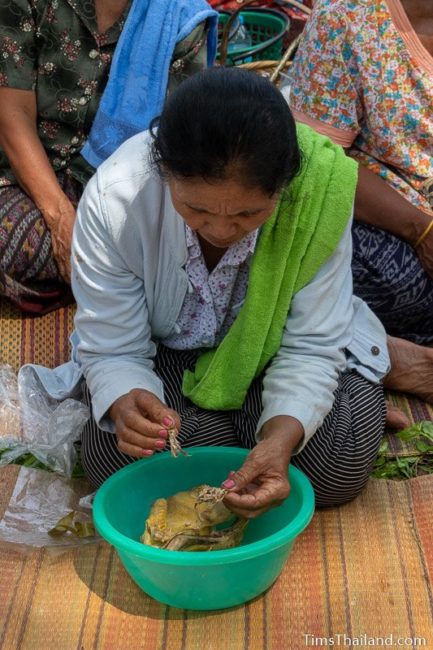
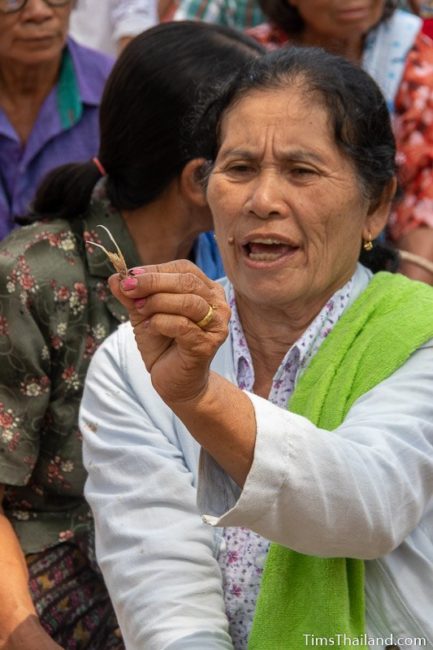
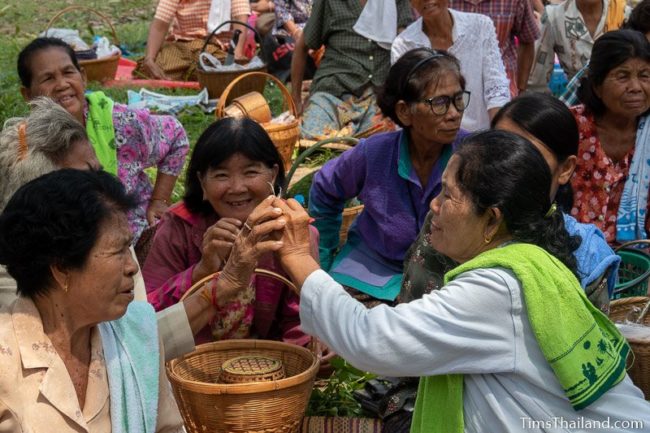
Many more bang fai rockets were launched during this part of the ceremony, and these were also prognostic. If the rocket flies well, the person’s wish comes true – if it explodes (as shown in the second picture) it won’t.
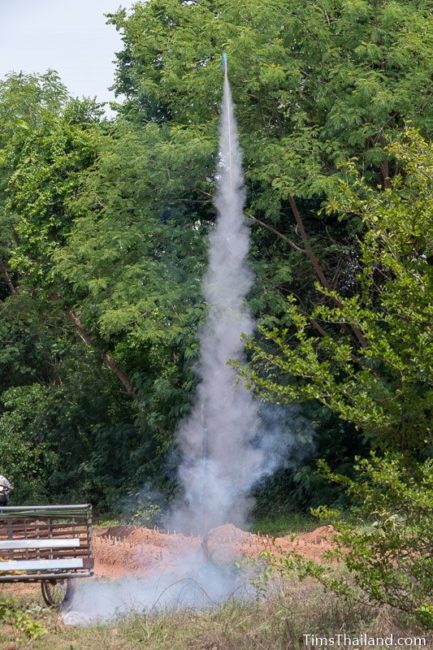
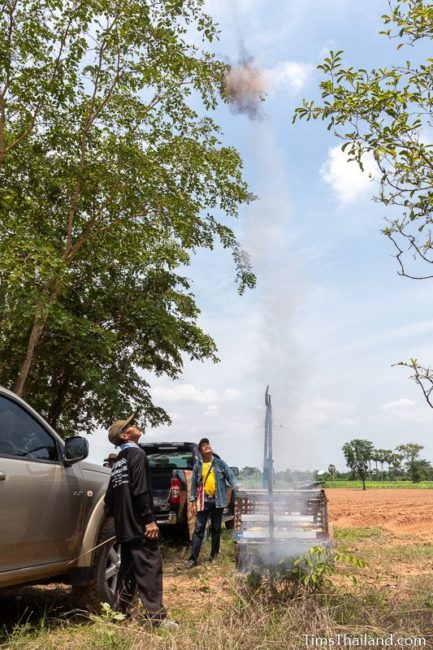
People then turned ninety degrees from the shrine to face the monks and sat through another round of chants and prayers as well as a dharma lesson. Villagers vowed to follow the five Buddhist precepts: no killing, stealing, sexual misconduct, lying, and overindulgence in alcohol and other drugs.
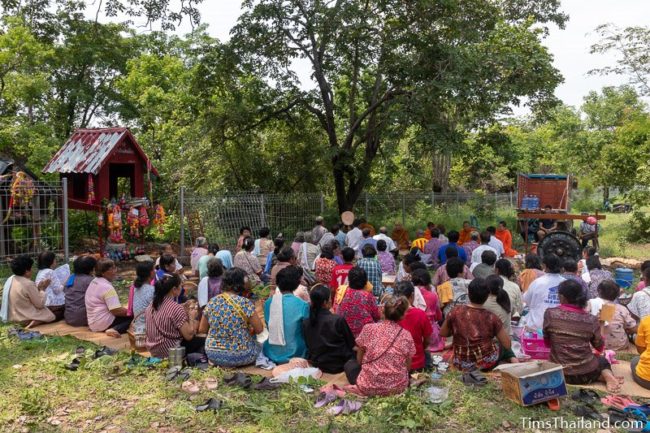
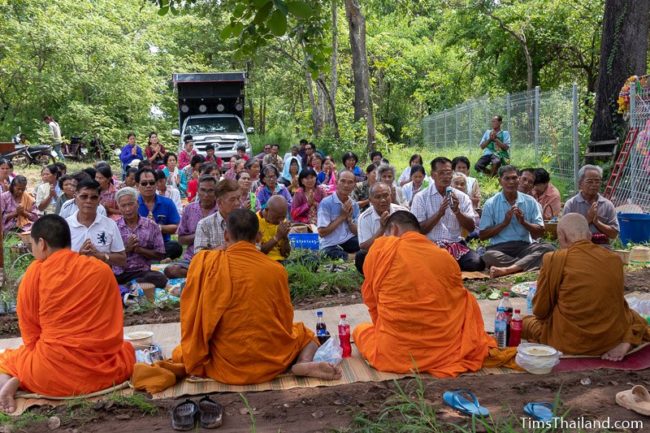
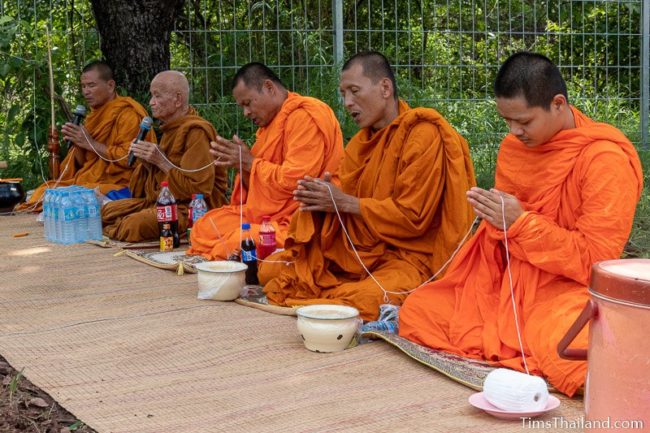
While a monk sprinkled water on people to bless them, the same thing that had been done back in the village, a man went with a bowl of water that had been on the spirit shrine and threw glassfuls over water over people to pass on even more good luck.
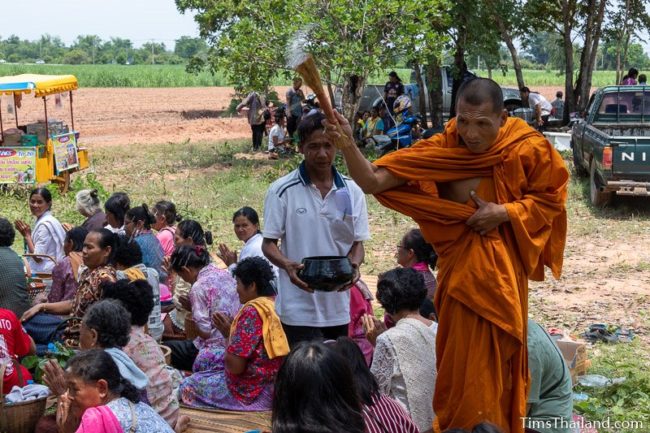
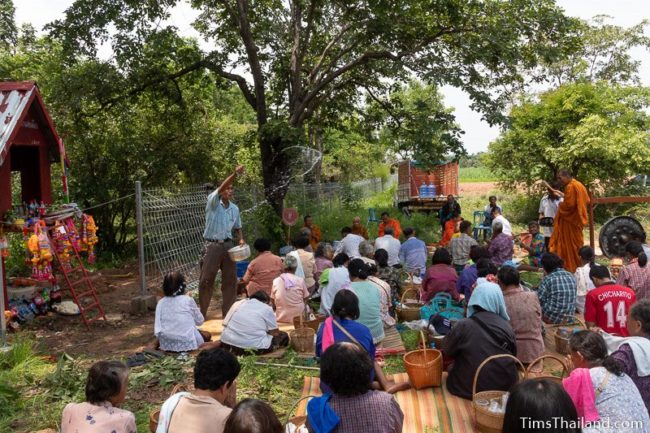
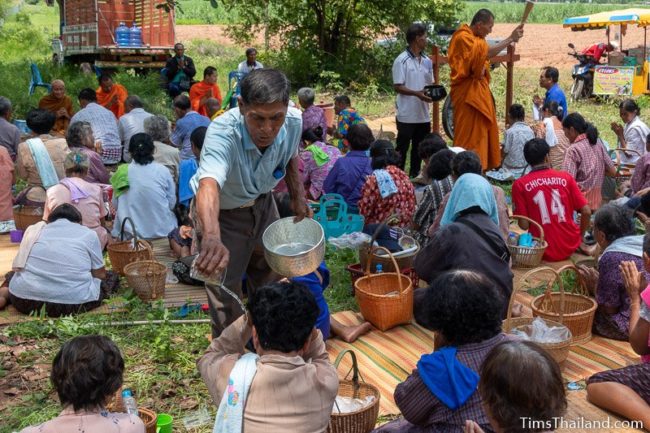
Over a dozen women spent their whole time out in the field preparing food – notably gaeng sai bua sai gai (lotus-stem soup with chicken), som tam (spicy papaya salad) and pak som (fermented vegetable) – for the monks. And when the monks were done eating, everyone else ate the rest.
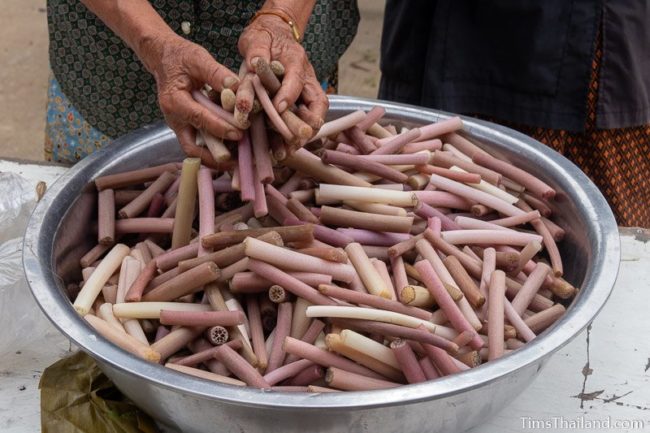
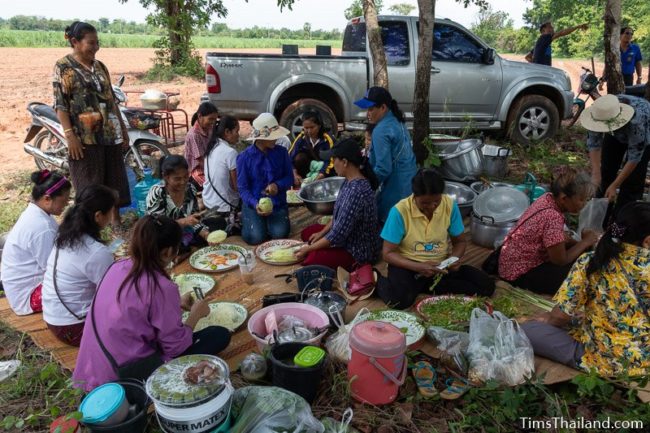
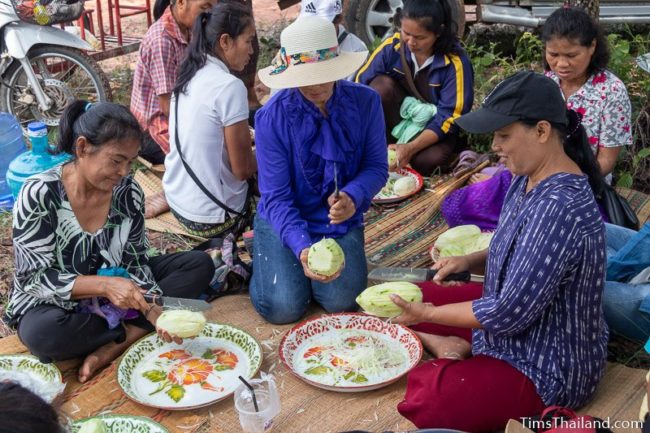
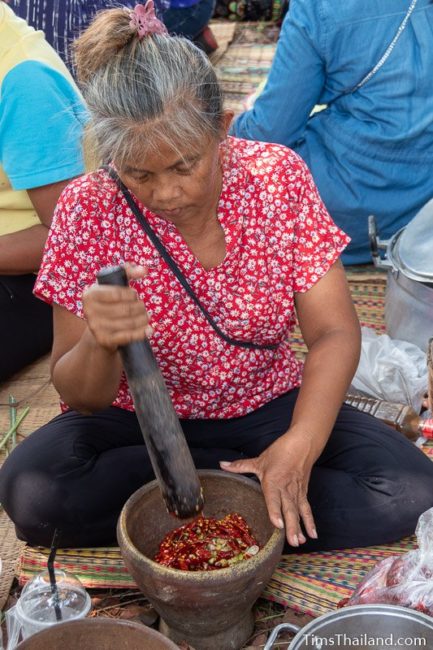
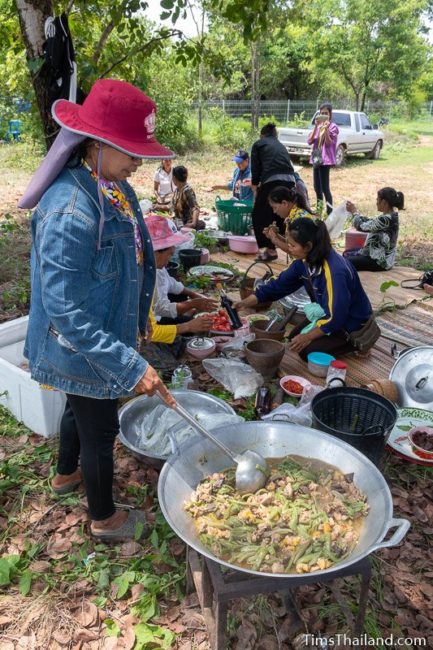
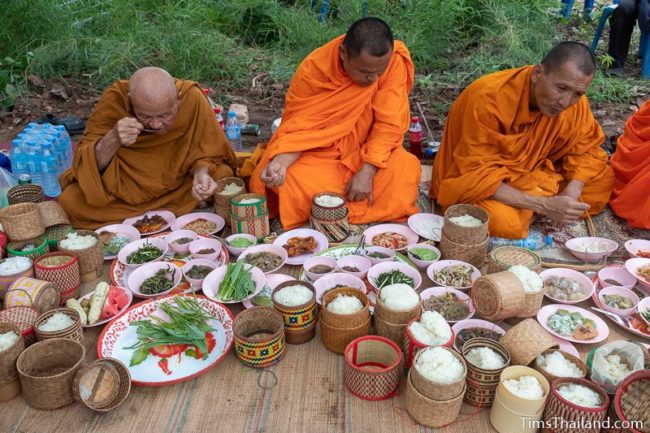
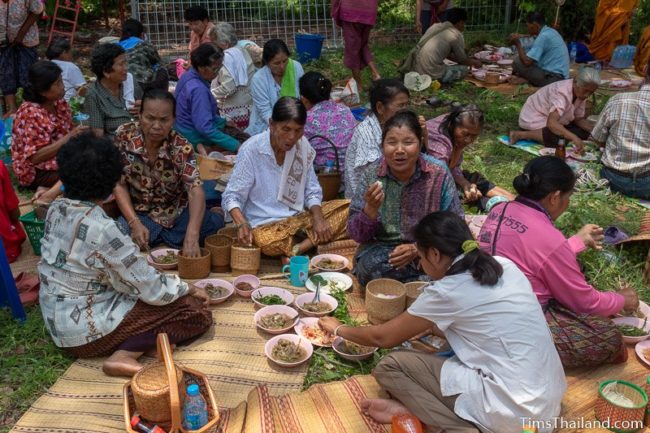
This year, eating was followed by dancing. Several villagers had recently won money in the lottery, and so they got together, with the help of smaller contributions from many of their neighbors, to hire a pair of mo lam singers.
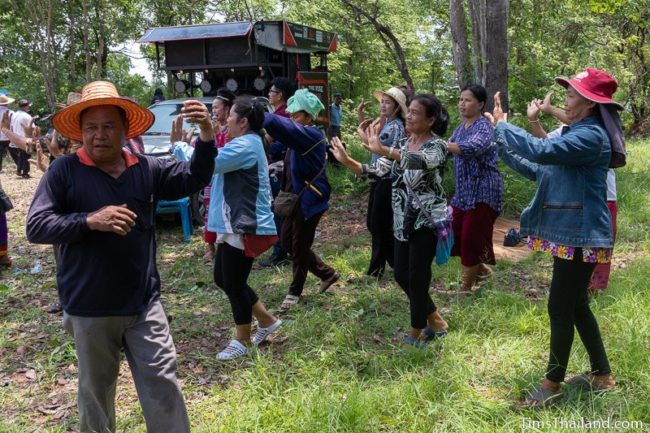
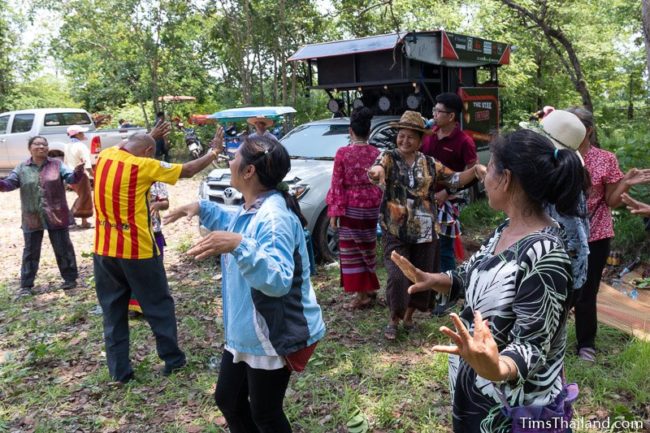
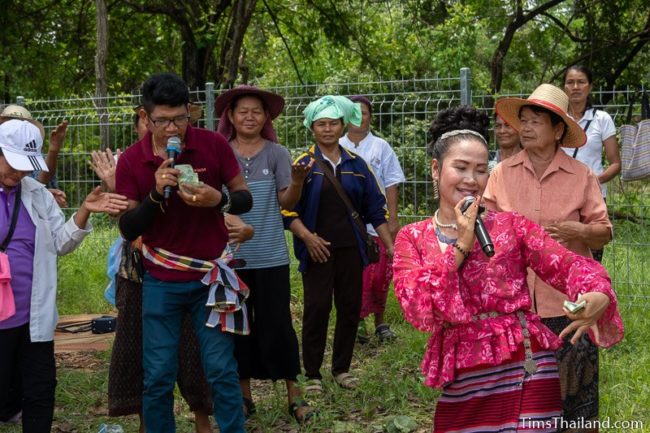
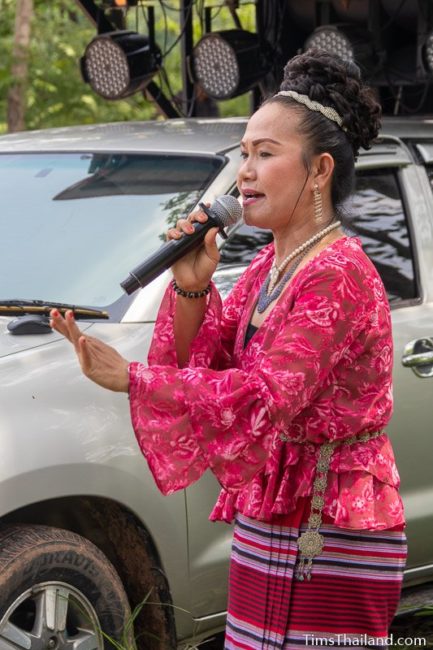
Boon Khao Kam (Month 1)
About Photo Essay
Boon Khun Lan (Month 2)
About Photo Essay
Boon Khao Jee (Month 3)
About Photo Essay
Boon Pha Wet (Month 4)
About Photo Essay
Boon Songkran (Month 5)
About Photo Essay
Boon Bang Fai (Month 6)
About Photo Essay
Boon Samha (Month 7)
About Photo Essay
Boon Khao Phansa (Month 8)
About Photo Essay
Boon Khao Pradap Din (Month 9)
About Photo Essay
Boon Khao Sak (Month 10)
About Photo Essay
Boon Ok Phansa (Month 11)
About Photo Essay
Boon Kathin (Month 12)
About Photo Essay